
With the return of the provision of non-emergency eye care moving closer, practices across the UK are considering how best to ensure a safe environment as patient volume increases. While personal protective equipment (PPE) will play a key role in this, it is worth considering how instruments and software can be deployed to either minimise time spent with a patient or allow for greater distancing during eye examinations.
Optos
Optos says many practices looking to build patient confidence in the provision of safe and effective eye care are turning to its Optomap ultra-widefield retinal imaging devices, which are designed for comfort, speed, efficiency and safety. In less than half a second Optomap imaging captures images of up to 200 degrees, or 82% of the retina, in a single shot. This can be done through pupils as small as 2mm, which eliminates the need for dilation at the discretion of the practitioner.
Importantly, images are acquired without the need to stand close to the patient, as the operator controls all adjustments with a hand controller or tablet. The images can then be reviewed remotely, if required. According to the company, the Daytona plus, California and Monaco devices all reduce the need for close proximity and the time required with patients, supporting the current social distancing guidelines and limiting the risk of exposure for patients and staff.
Zeiss
The Zeiss Cirrus OCT allows for social distancing during diagnostic exams in practice through its ability to connect to an external monitor. This allows for the operator and patient to be in the same room but at a safe distance. Another option the company outlines is to setup the Cirrus device for use from a remote location, most likely a separate room. This remote connection option allows for the acquisition of images while patient communication takes place via screens.
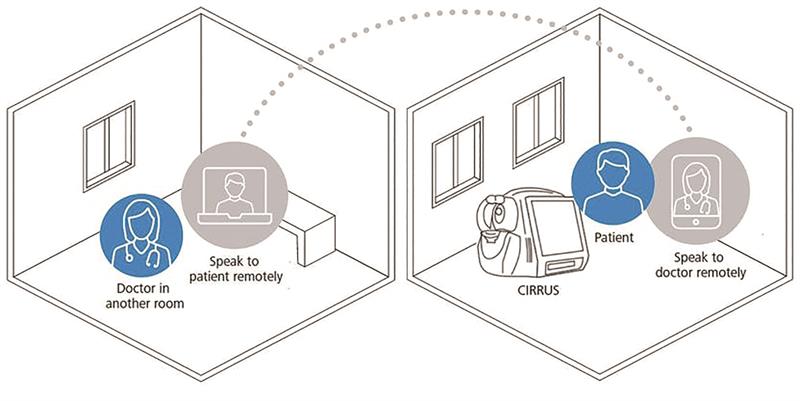
The Zeiss Cirrus OCT
Zeiss advises that for patients with difficulties relating to holding their heads firmly against the chin rest and forehead rest, poor fixation or very small pupils a standard imaging approach using suitable PPE should be used instead. Furthermore, if an exam requires the acquisition of an anterior segment image, the eye care professional (ECP) should prepare the necessary lenses in advance and be able to verbally guide the patient through positioning and alignment.
Heidelberg Engineering
The Heidelberg Spectralis OCT has several benefits which allow the optometrist to observe social distancing and minimise time spent with, or near, the patient. The device uses confocal scanning laser ophthalmoscopy, which is an invisible light source that enables the clinician to image the patient’s retina live and without dilation. This means they can assess the health of the patient’s retina from a distance in real time and capture images as necessary. Not needing to dilate the eye means the patient can drive to and from their appointment, minimising contact with the clinician and the need for them to bring somebody else with them or use public transport.
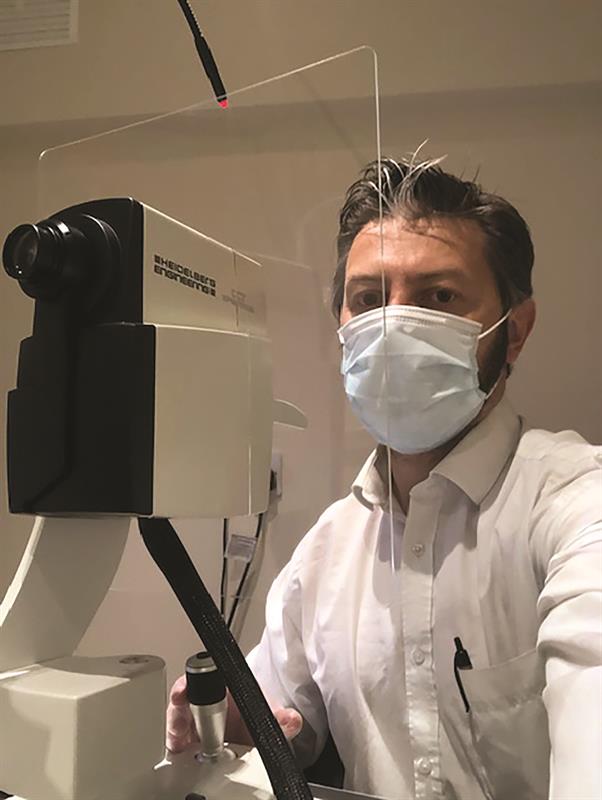 Heidelberg Spectralis OCT
Heidelberg Spectralis OCT
The device is also a multimodality imaging platform, which reduces the need to move the patient around onto different instruments, minimising their contact with surfaces and time in the examination room. The company says clinicians who do not want to have patients undergo visual field examinations due to the lengthy duration of the test and concerns about hygiene, OCT can be a useful structural diagnostic test for glaucoma and an indicator of likely damage to the visual field. Images can be acquired quickly that provide the clinician with information about the patient’s risk of glaucoma. Additionally, Heidelberg also states that the Spectralis is easy to clean and that the company has supplied every owner in the UK with free protective breath shields for the device.
BIB Ophthalmic Instruments
To facilitate greater distancing between practitioners and patients in practice, BIB is promoting its Revo Optopol FC OCT with fundus camera. The company outlines a method to use the device remotely in conjunction with AnyDesk software. This involves placing the OCT in an isolated room where the patient is given appropriate equipment to clean and disinfect the OCT and other necessary equipment. Meanwhile the practitioner is able to access the computer terminal from a different room using the AnyDesk software. The device itself can guide the patient through the process with the use of vocal messages.
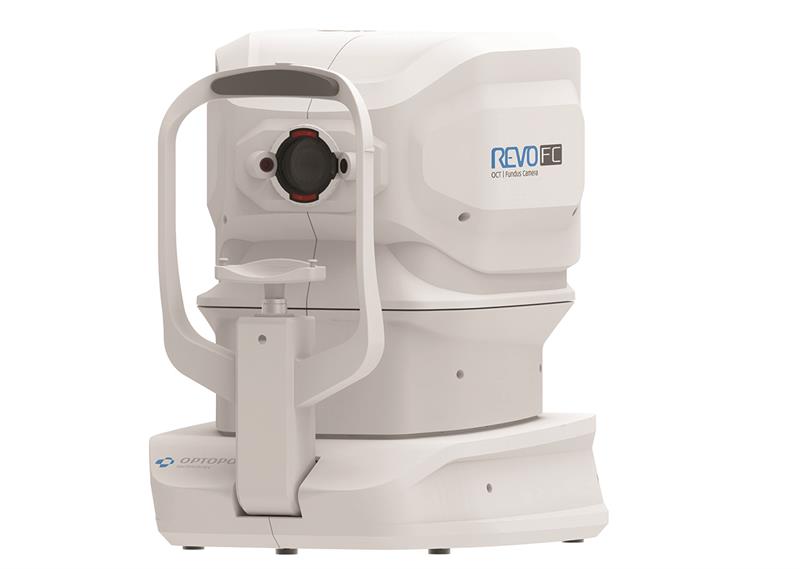 The BIB Revo Optopol FC OCT
The BIB Revo Optopol FC OCT
Also from BIB is the Righton RVII Auto Phoropter. This device uses the traditional desktop controller and a dual infra-red remote handset to operate both the phoropter and RG24 Led Test Chart. The handset allows for operation of chart and phoropter at up to a distance of seven metres.
Grafton Optical
Grafton Optical supply the Rexxam DR900 Motorised Refractor Head, which maintains appropriate distancing when performing refraction procedures. The DR-900 system offers high quality and ultra-reliable digital refraction with a fast, smooth and quiet measurement. The five metre cables allow for increased distancing between the operator and the patient while the auto-phoropter helps to maintain distance to the patient when performing the refraction procedure. The device features a detachable face panel for easy and thorough cleaning.
Also from Grafton, the V100 Handheld Vision Screener is a portable diagnostic device designed to allow clinicians to quickly detect vision abnormalities on patients from six months old to adults. With the Cell V100, users can carry out a distanced refraction and screen both eyes from a distance of one metre. Once in focus, results are captured within one second.
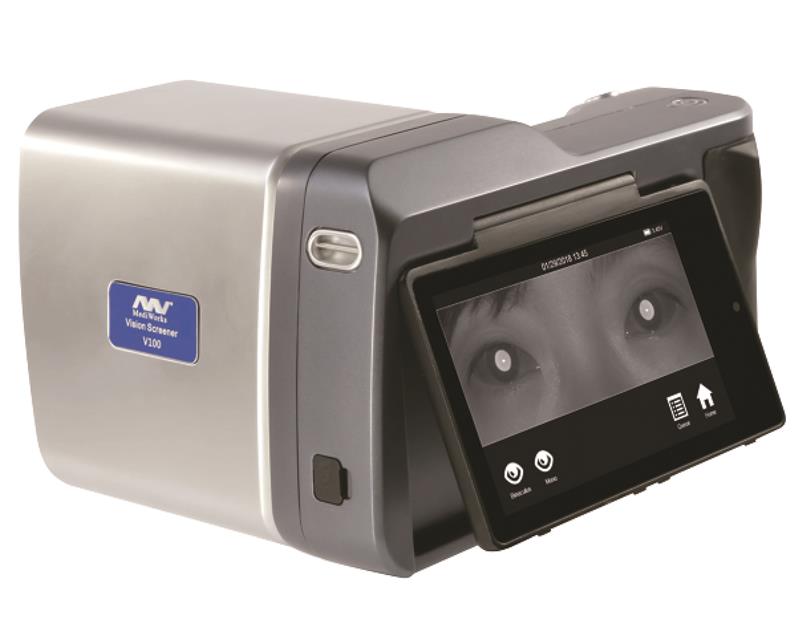 Grafton's V100 Handheld Vision Screener
Grafton's V100 Handheld Vision Screener
Mainline Instruments
The Icare ic100 tonometer from Mainline offers greater safety in practice due to a reduced risk of cross-contamination. Unlike some other tonometry devices, the Icare tonometer uses a single-use individually packed probe rather than alternative techniques such as drops, anaesthesia or air puffs. Crucially, unlike air puff tonometry, it does not create micro-aerosol formations and therefore reduces the risk of cross-contamination and infection. The speed of the device, which requires no specialist training, also reduces time spent in proximity with a patient.
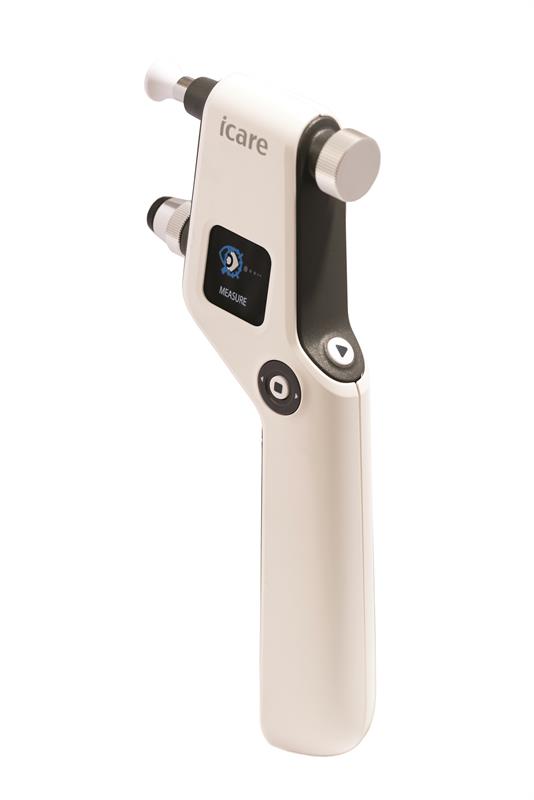
Mainline Icareic ic100 Tonometer
Mainline also highlights its DRSplus confocal fundus imaging system that uses white LED illumination to produce TrueColour and detail-rich images. The company says the device will minimise time spent close-up with the patient due to fast and automatic operation. After pressing start practitioners can then move away from the device while it automatically cycles through the images specified. The device also has the ability for remote viewing so the results can be analysed in a separate room.
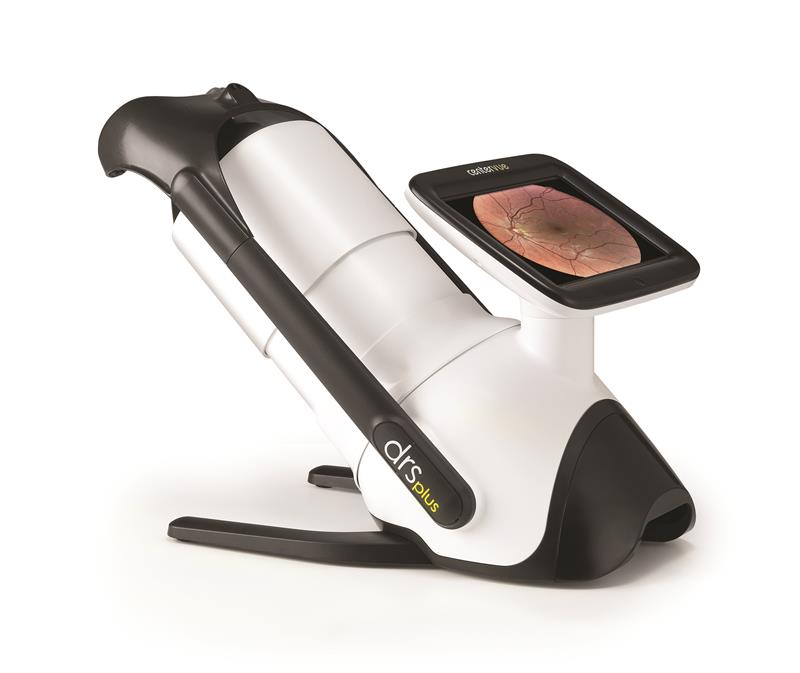 Mainline's DRSplus confocal fungus imaging system
Mainline's DRSplus confocal fungus imaging system
Luneau Technology
The VX65 Automated Digital Phoropter from Luneau is supplied with a choice of charts and a safety breath shield as standard. Luneau says wireless tablet operation allows for refraction at a safe distance and demonstrates a practice’s commitment to a new way of undertaking eye examinations to patients. Furthermore, the product is said to offer an easy transition from trial frames or manual phoropter through its intuitive tablet layouts.
Luneau also supplies the multi-diagnostic device Visionix VX120+, which offers a number of fully automated features. These include one-touch, high-end auto refraction and keratometry, day and night refraction, tonometry with corrected intraocular pressures, pachymetry showing an image of the anterior chamber, cataract screening and monitoring (including an LOC scale), and topography (allowing for orthokeratology and other specialist contact lens fitting). The device now comes with a tablet for safe distancing pre-screening while it also increases safety in by reducing the time necessary for patients to be in practice.
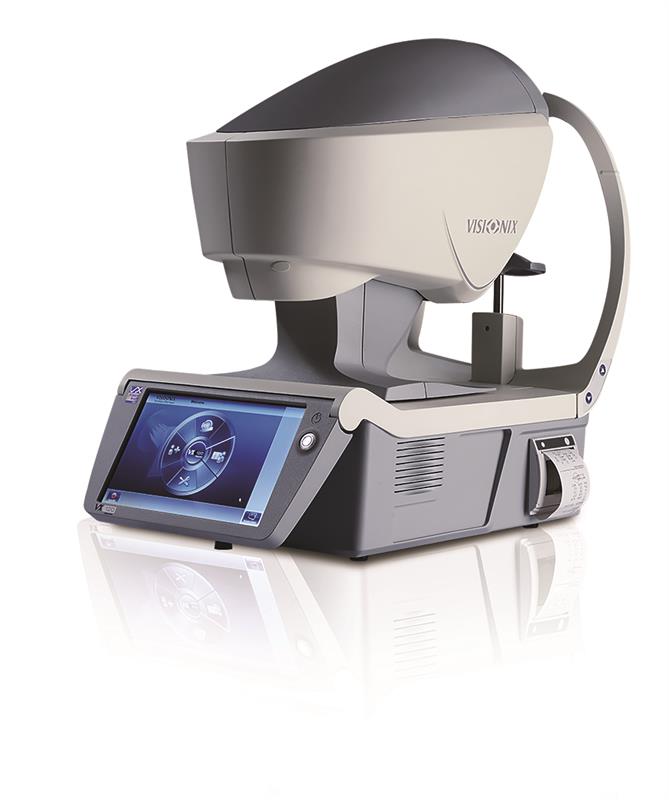 Luneau's Visionix VX120+
Luneau's Visionix VX120+
Thomson Software Solutions
Thomson Software Solutions has products that can help optometrists comply with social distancing guidelines. Its phoropter module allows simultaneous control of the Nidek RT5100/ RT6100 and the Topcon CV5000 phoropters directly from the Thomson Test Chart interface. This allows practitioners to perform a complete refraction from a PC screen situated at a safe distance from the patient. With the same software controlling the test chart and the phoropter, various aspects of the routine can be streamlined by displaying preferred charts when certain lenses are inserted and vice versa.
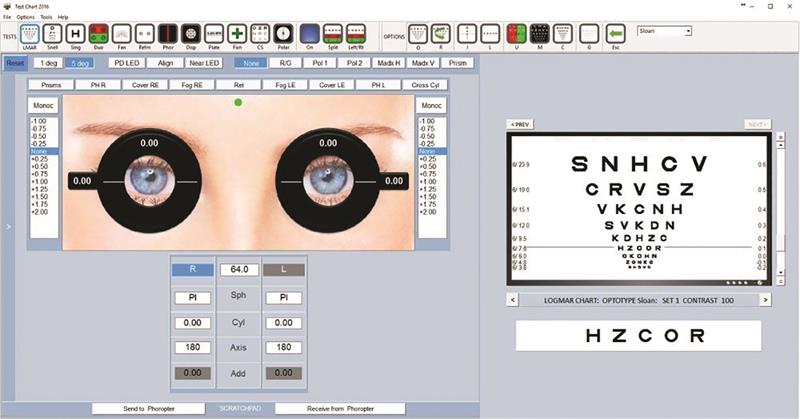 Thomson Test Chart interface
Thomson Test Chart interface
The company also notes that current guidelines on social distancing have made it difficult for some patients to attend a clinic to have their visual acuity checked. According to the company, increasing number of hospitals and practices are turning to Thomson Test Charts in conjunction with video-conferencing software such as Zoom or Teams. The practitioner displays the test chart on their own screen and then, through the video conferencing software, shares their screen with the patient. The patient is asked to perform a simple calibration on their screen and measure the screen viewing distance. The chart is then fully calibrated for the patient’s computer and the practitioner can supervise the acuity measurement via the video link. A video explaining the entire process is available at www.thomson-software-solutions.com.
Essilor
According to Essilor, practices can reinvent the traditional eye examination with a quick digital test with the Vision-R800, which can be operated up to seven metres away. The company says the Vision-R800 offers subjective refraction in 0.01D steps to offer greater accuracy thanks to a patented, automated optical module powered by digitally-controlled motors. The device provides simultaneous and instantaneous changes of sphere, cylinder and axis, to reach the final prescription faster, instead of examining these components individually.
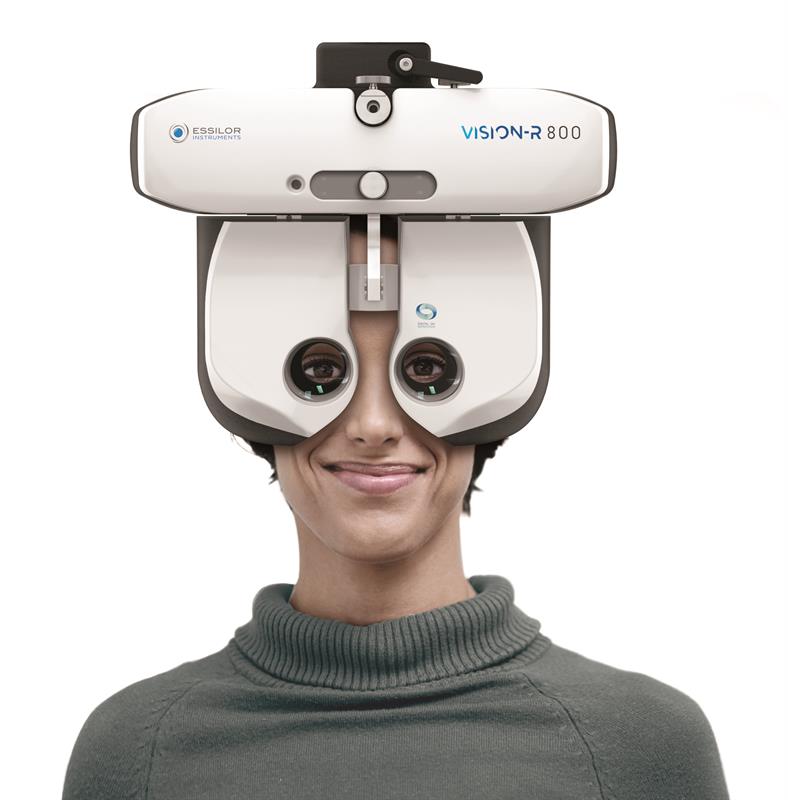 Essilor's Vision-R800
Essilor's Vision-R800
Tim Precious, managing director at Essilor, says: ‘Adopting new advances in technology to allow for social distancing and efficiency will help ECPs allow for greater safety in practice. Using equipment like the Vision-R800 Phoropter, which can be operated from a safe distance and minimises the time spent performing an eye examination, will help put minds at rest in the current climate.’
For lens measurements, Essilor recommend opting for a non-contact measuring device such as Visioffice X. The device, which can be operated from a distance of three metres, works on facial recognition and HD cameras so no physical contact with a patient is needed in order to obtain fitting, physiological and behavioural measures. ‘Automated equipment that reduces the need for close contact with an operator and limits the number of touch points a patient needs to make, should be worth considering,’ says Precious. ‘When it comes to lens measurements, the Visioffice X does just that by offering non-contact measurement from a distance so no physical contact with a patient is needed.’
Shamir
An option for practices wishing to take lens measurements in the safest way possible is the Spark Mi Up from Shamir. The company say the device enables practitioners to take all the required measurements for complex progressive and single vision lenses, clear or tinted, from a safe distance using only one picture and without any cumbersome jigs.
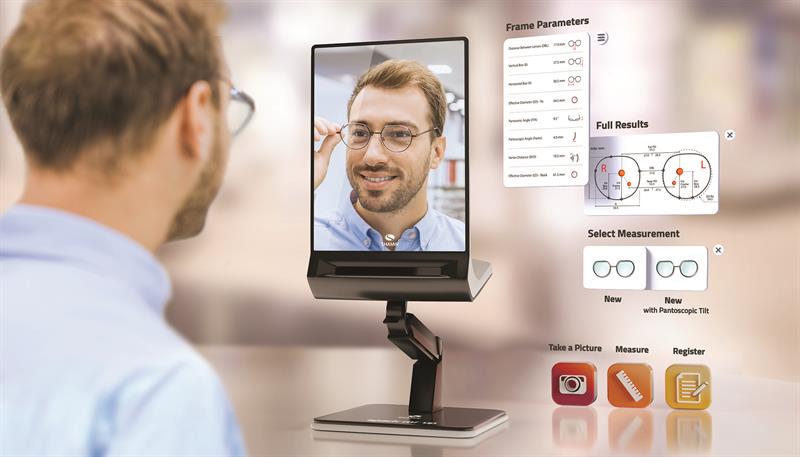 Shamir's Spark Mi Up
Shamir's Spark Mi Up
Russell Bickle, national sales manager at Shamir, says: ‘Spark Mi Up can be positioned up to five metres from the dispensing computer and because it is simple for the patient to adjust the height of the mirror the ECP can stay at a safe distance while taking the measurements. Once the picture has been taken the ECP can store it for review later, which allows the patient to spend less time in the practice. Spark Mi Up is a very small piece of equipment with a high-end gloss finish, it allows a practice to add it to the dispensing or retail space without taking up much room.’
Hoya
Hoya’s Visureal Master video centration system allows for distancing through its compatibility with devices including tablets and smartphones that can be used to control it remotely. Designed to look like a contemporary wall mirror, the system features a six-camera set-up with user-friendly software showing all contraption data in a clear fashion. Data captured includes box dimensions, distance between lenses, face form angle, pupillary distance, monocular pupillary distance, corneal vertex distance, pantoscopic tilt and fitting height.
Rodenstock
The DNEye Scanner 2+ from Rodenstock is said to allow practitioners to carry out eye measurements while maintaining safe working distances. The device is fully automatic and provides high-resolution wave front analysis, brightness-dependent pupillometry, corneal topography, autorefraction (near and far), refractive media opacity, pachymetry with detailed analysis of anterior eye chamber, and tonometry. Crucially for current needs, the device has a remote display interface.
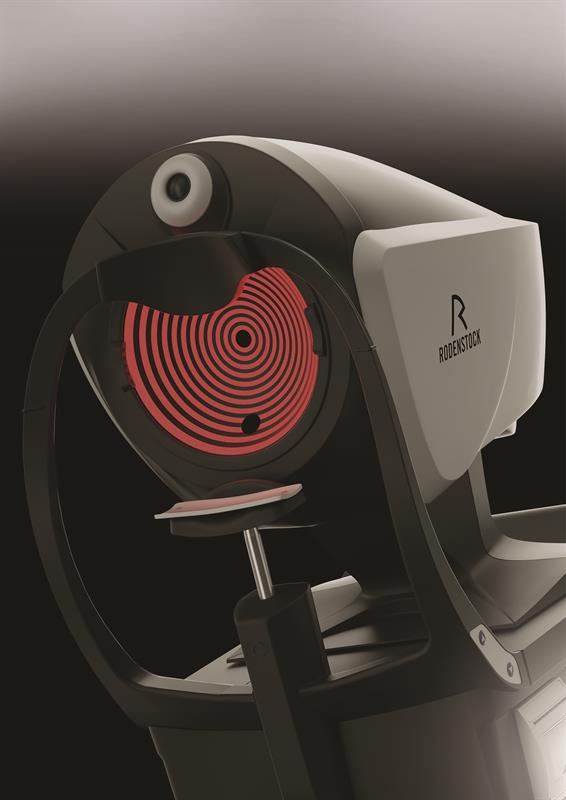 Rodenstock's DNEye Scanner 2+
Rodenstock's DNEye Scanner 2+
Another useful tool for social distancing in practice is Impressionist 4, the latest generation of video centring systems from Rodenstock. An interactive information terminal with 3D video centring system, lens consulting and ordering, the device supports social distancing through tablet operation.
